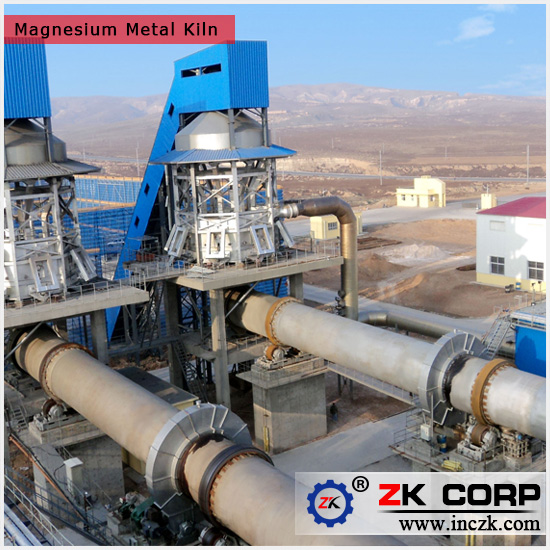Function of Preheater Rotary Kiln
Date:2016-09-08 Source:zk corp Views:
As a calcination equipment for the final formation of lime, the preheater rotary kiln has been used alone to undertake the task of clinker burning in the process of lime production. Preheater rotary kiln has five major functions.
1 Preheater rotary kiln is an inclined revolving drum (the angle of the slope is generally in 3%-5%), The raw material added from high end join (the kiln tail), in the continuous rotary movement of the kiln, the material moves from the high-end to the lower end (the kiln head) gradually, so rotary kiln is a transmission equipment.
2 Preheater rotary kiln is a burning equipment. The ground coal is sprayed from the kiln head blower to kiln. The burning hot air passes the heat to the material through three basic heat transfer modes of radiation, convection and conduction. As a fuel burning equipment, preheater rotary kiln has a vast space and thermal field, it can provide enough air, equipped with excellent combustion device to ensure full combustion of fuel, and to provide the necessary heat for the clinker.
3 Preheater rotary kiln has the function of heat exchange. The preheater rotary kiln has a relatively uniform temperature field, which can meet the requirements of heat transfer lime formation stages, especially the formation of Alite requirements.
4 Preheater rotary kiln has the function of chemical reaction. There is a series of physical and chemical reaction in the process of active lime formation, preheater rotary kiln can meet the different stages of mineral formation heat and temperature requirements, and meet their demands on time, it is an ideal chemical reactor.
5 The function of degradation and utilization of waste. Because that the preheater rotary kiln has a high temperature field and a long time of heat flow, which can degrade the toxic and harmful waste from the chemical industry, medicine and other industries. At the same time, the majority of the heavy metal elements can be solidified in the clinker to produce stable salts, which avoids the two pollution caused by the waste incineration furnace.


